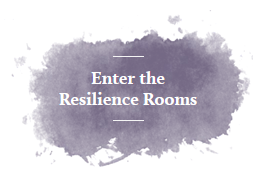Gaining self-awareness during overwhelming, chaotic, and uncertain times
During times like these when things are so chaotic, uncertain, and anxiety-provoking, our minds can seem overwhelmed and unwieldy. As hard as we may try to avoid, distract, or ignore our anxious thoughts and feelings, we eventually learn that we cannot control them. The only thing we have influence over is the actions we take on behalf of them. It can be uncomfortable and daunting when the thoughts and feelings are incessant and intense. It takes conscious awareness and proactive effort to tame our understandably anxious minds.
Our Anxious Minds
Some people perseverate or hyper-focus and complain that “they can’t get their mind off of ___.” Others overthink things and can’t stop “what-if-ing or “but-ing” themselves, while others catastrophize, chronically worry, and/or have negative, dreaded, or pessimistic thoughts. Some others have racing thoughts, in which they experience their mind buzzing. The quality of these thoughts may lead to sadness, despair, and intense feelings of worry, fear, disappointment, and frustration.
Our mind’s level of chattiness varies from person to person. Because of the level of discomfort, there is often a struggle to avoid, get rid of, or “wish” that the thoughts and feelings ceased or never existed. This struggle perpetuates a mind loop where we end up challenged by having thoughts about our thoughts, feelings about our feelings, thoughts about our feelings, and feelings about our thoughts. For some, this mind loop can be exhausting, painful, and frustrating. It can be challenging to have self-compassion when all of that “noise” is surfacing causing us to question, defend against, and desire to avoid ourselves.
Patients have described it as being freeing to open to the idea of noticing their thoughts, accepting them for what they are, while also reserving their self-judgment and self-criticism. They recognize the choice to act on behalf of their best self and who they want to be as opposed to relying solely on their thoughts and feelings to guide their behavior.
Feelings hit up against our core beliefs. Evaluate which core beliefs are being rubbed up against. Is it ineffectiveness? Unlovability? Hopelessness? Do they tend to hit up against one or multiple ones? Do they remain consistent or change based on the circumstance? Ask yourself what your core beliefs are and what their utility and variability are in the present moment.
On the continuum, individuals who are anxious are more apt to have “chattier” minds. They tend to be flooded with anticipatory anxiety (before), anxiety in the moment (during), and postpartum anxiety (after). The cycle appears with “____ will happen,” “what ifs,” and “I should/could haves.” Ask yourself whether you tend to have a chatty mind and if you are flooded with anxiety before, during, or after events?
Our mind is relentless at protecting us. It always tries to protect us — even when it is not necessarily warranted. The safety I speak of includes protection from rejection, pain, disappointment, etc. Thank your mind for this! The “what ifs” are purposeful. For example, if we did not think “I’m going to mess up my presentation” we may not be prompted to practice our talking points. The challenge presents itself when the thought “I’m going to mess up” becomes all-encompassing and impacts a person’s self-confidence and ability to effectively study and concentrate the material. Ask yourself if you have an overly overprotective mind and whether it sometimes gets in the way of you doing what you want to do.
Rather than be beholden to accept their thoughts and feelings as facts, they learn to observe them, assess them, and respond to them mindfully and thoughtfully. Learning how our mind functions can make all the difference in reducing self-criticism and shame, increased self-compassion, and acting on behalf of our best selves.
In Order to Gain Awareness and Tame Your Anxious Mind, Consider That:
Our mind holds onto formative ways of thinking, feeling, and coping. When I ask people “how old” their thought or feeling is, it is usually an old thought or feeling dating back to childhood; especially when there is a lot of intensity attached to it today. The thought and/or feeling may be familiar, “comfortable” because of the familiarity, and the person’s default posture and mindset. These thoughts, feelings, and coping mechanisms may have been extremely purposeful in childhood but sometimes does not accommodate the person’s development as they mature into adulthood. Ask yourself what thoughts, feelings, and coping mechanisms do you hold on to, and do they presently work effectively for you?
We default to patterns of thinking, feeling, and behaving. Observe the consistent patterns and whether they pertain to the present set of circumstances. Evaluate for yourself whether you are falling back into these older patterns or whether the circumstances would naturally evoke those set of thoughts and feelings. Also, assess if you tend to fall into those typical ways of reacting and acting on behalf of those thoughts and feelings. Reassess if that is in fact how you want to be acting. We may not have control over our thoughts and feelings, but we can presently make different choices about our behavior. Ask yourself if you are following and perpetuating certain patterns and how they serve you today.
You likely ask yourself or are asked by others to “stop” having the thoughts and feelings that surface. You are expected to accomplish this by reciting “positive affirmations,” “having gratitude,” “thinking about something pleasant or positive,” or “thinking about something else.” You soon realize that there is no feasible method of “getting rid” of the thoughts and feelings, rather efforts can be made to dial down and decrease the intensity of distress so that life can be lived more meaningfully.
Our minds do what they do. It varies as to how chatty our minds are based on our genetics, physiology, and personal experiences. It differs as o the degree to which we behave from our intellect (pre-frontal cortex) vs. our emotions (amygdala). There is also variability as to how negative our thinking innately is.
Validating Our Minds
I make it a point to validate and verbalize to my patients that how they think and feel is understandable, expected, and that they are intrinsically good enough and okay just as they are, no matter how chatty their minds are. Also, I tell them there is a difference between thinking about something and acting on behalf of the thought and feeling. Finally, I let them know that they have thoughts and feelings, rather than are their thoughts and feelings. They are not directly defined by them. For example, they can have a mean thought and it does not make them a mean person.
Based on our negativity bias and our mind’s protective mechanism, it tends to be naturally negative and holds onto and remembers the negative. Mindfulness and meditative practices facilitate the effort to be in the present moment and retrain our mind to be flexible and open to other possibilities. In the ACT work I do, we call it “psychological flexibility.” I ask my patients: How else can you see it? What are other possibilities? It helps to open and expand the mind. Ask yourself whether you tend to see things through a negative lens and whether you take the opportunity to be flexible and expand your thinking.
We don’t have to believe everything we think. I have a sign with these words on my office door. Be cautious at accepting your thoughts as facts. Observe your thoughts, be curious about them, notice your judgments, and ask how else can things or circumstances be considered. If it is just a thought, try challenging it. If it is a fact, then notice it, accept it, problem-solve through it, while compassionately being with the thoughts and feelings that surface. Ask yourself whether you instantaneously accept thoughts as facts and whether you are open to assessing and working through them no matter what the circumstances.
We are taught to be happy (“happily ever after”), “fix things that are broken,” “get rid of bad feelings and hold on to only the good ones,” and “what we think or feel is reflective of who we are.” It makes it difficult for us to “be okay” because this rarely all falls into place. Part of our intrinsic humanness is acceptance of all that we are and are presented with, including the more comfortable and less comfortable thoughts and feelings. I always refer to it this way, never suggesting that feelings fall into the categories of good and bad. That connotes that if we have bad thoughts, then we are bad, and if we have good thoughts, then we are good. If this were the case, our humanness would dictate that we are all bad because negative and less comfortable thoughts and feelings are constantly being evoked.
The reality is that all thoughts and feelings are worth being inquisitive about and understanding better because they lend to us a better understanding of ourselves and are helpful at providing insight into our intrinsic values and what’s truly important to us. Ask yourself whether you judge yourself and others as “good” or “bad” for having particular thoughts and feelings and if you attempt to avoid, get rid of, or distract from the negative and less comfortable ones.
We strive to be accepted and sought after and get hooked on fear regarding our interpersonal relationships. There lies why we get confused and have conflicting thoughts and feelings about our “selfishness” and our need for “self-preservation.” When we perceive ourselves as being “selfish,” we experience ourselves as being mean, self-centered, self-serving, and non-caring. It serves us well to accept that sometimes we need to make decisions that are based on our own needs for the sake of self-preservation, despite whether it may make someone uncomfortable or negatively impacts them. The key is whether we truly ponder the impact on others in our decision-making and take that into consideration. Ask yourself whether you judge yourself for considering your needs and if you take the time to reflect on the impact it has on others in the process.
I was recently working with a patient who was experiencing distress over the rising numbers of recent COVID-19 cases. She saw herself as a victim and took on the feelings of passivity, hopelessness, and disempowerment. We evaluated her core beliefs, patterns of thinking, and negativity biases. We reframed her self-perception as being a survivor and transitioning her to becoming proactive, hopeful, and empowered, and further identified specific ways in which she could live her life in line with who she is and how she wants to be.
Accept, appreciate, and be proud of all that you are, inclusive of your thoughts and feelings. When you forge efforts toward self-awareness and taming your anxious mind, you facilitate the ability to approach the world with greater openness, curiosity, and flexibility. Even during challenging times like these, when your mind may be on overdrive, it will open you up to new experiences and endless possibilities for personal growth and living life meaningfully.
I invite you to watch this “Coping With Intense Emotions Guided Meditation” led by me and feel free to subscribe for other meditations.
Blog as posted in Psychology Today.



